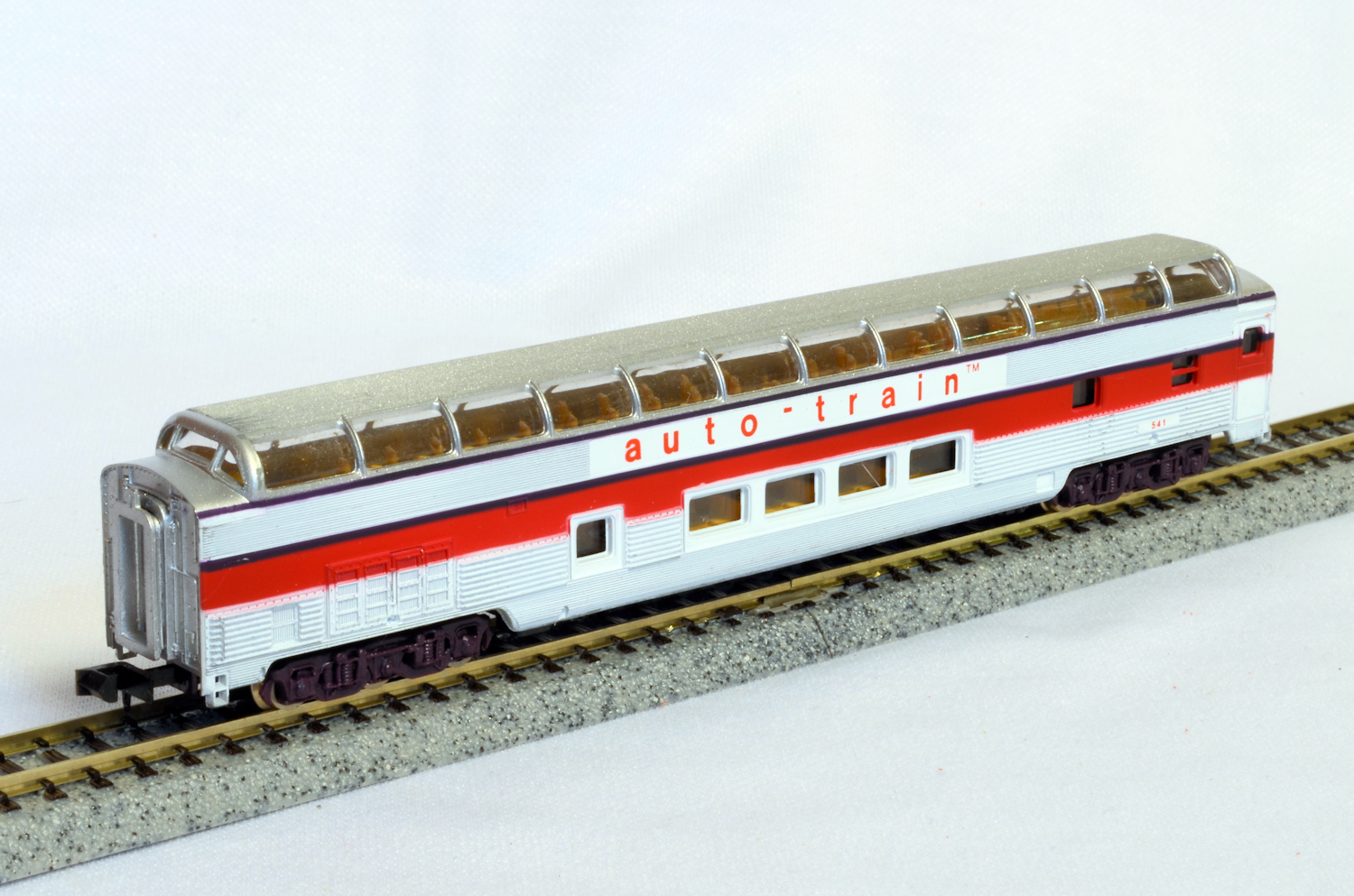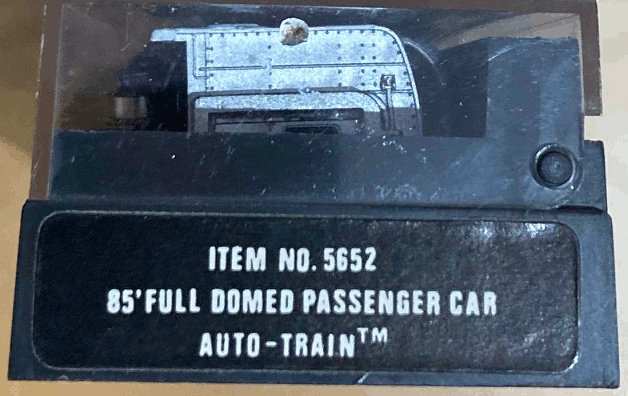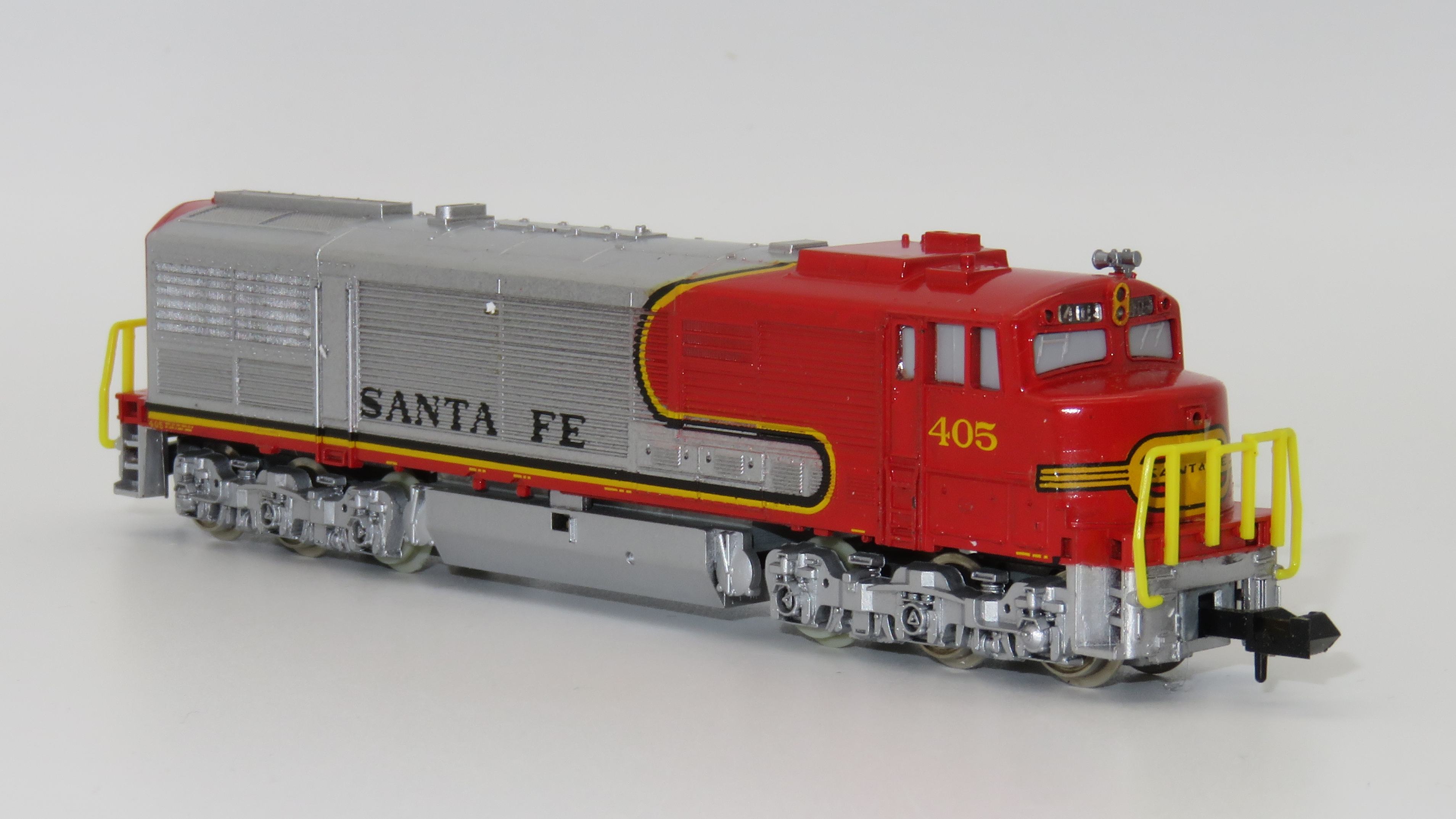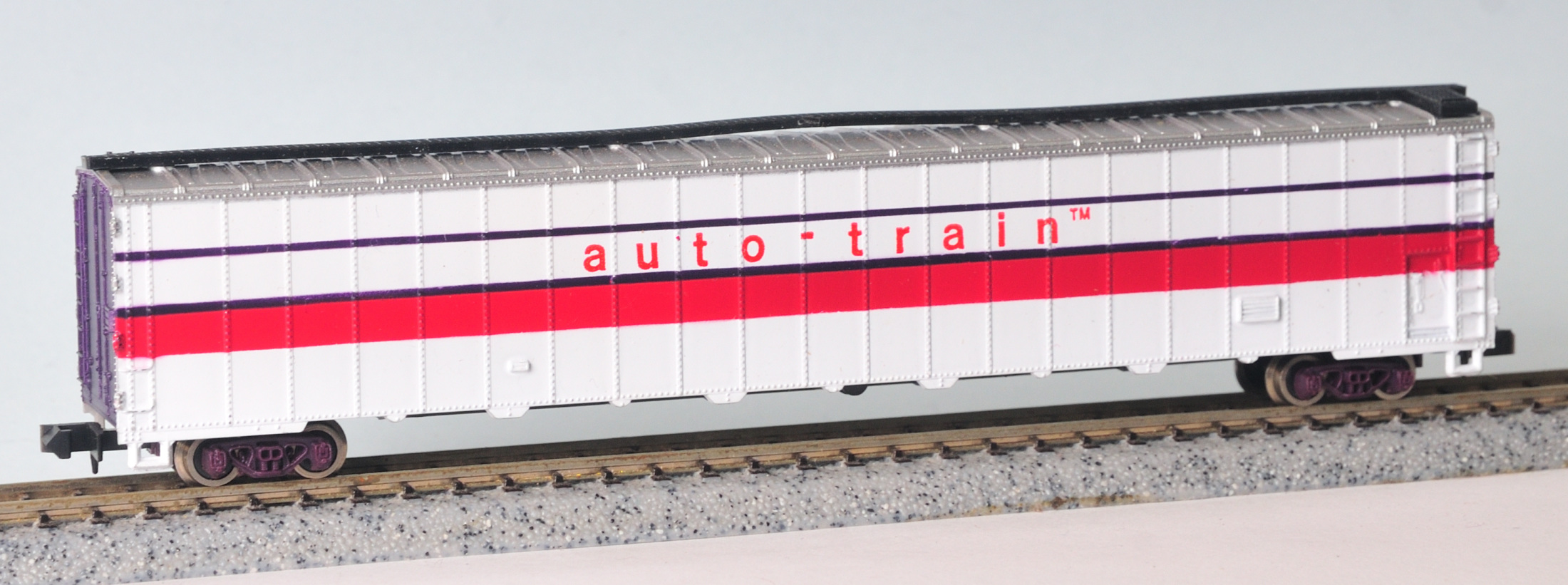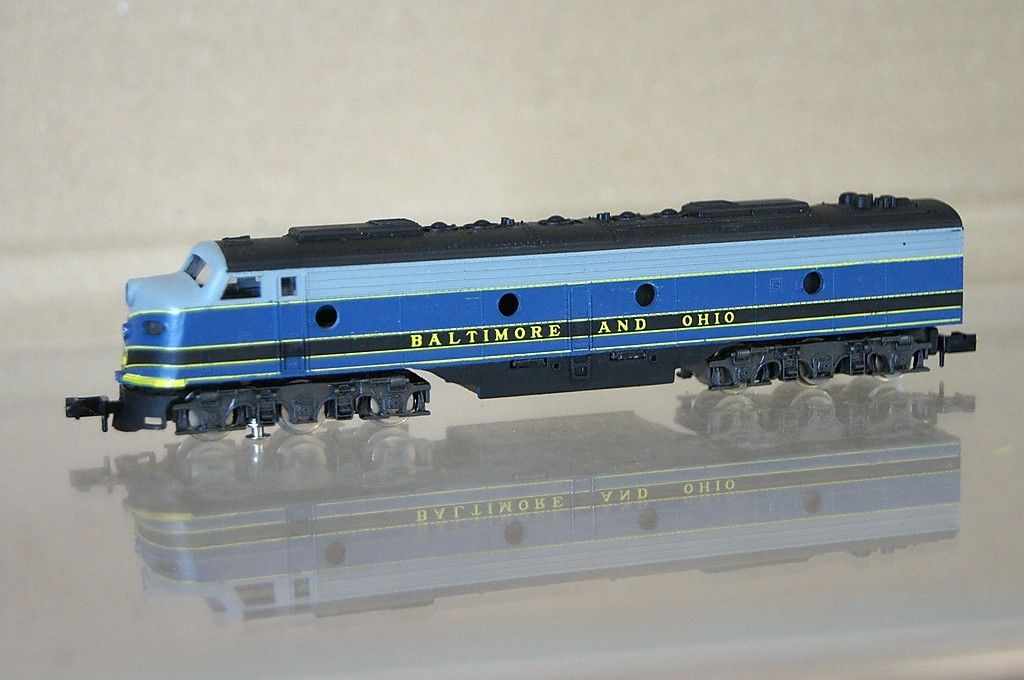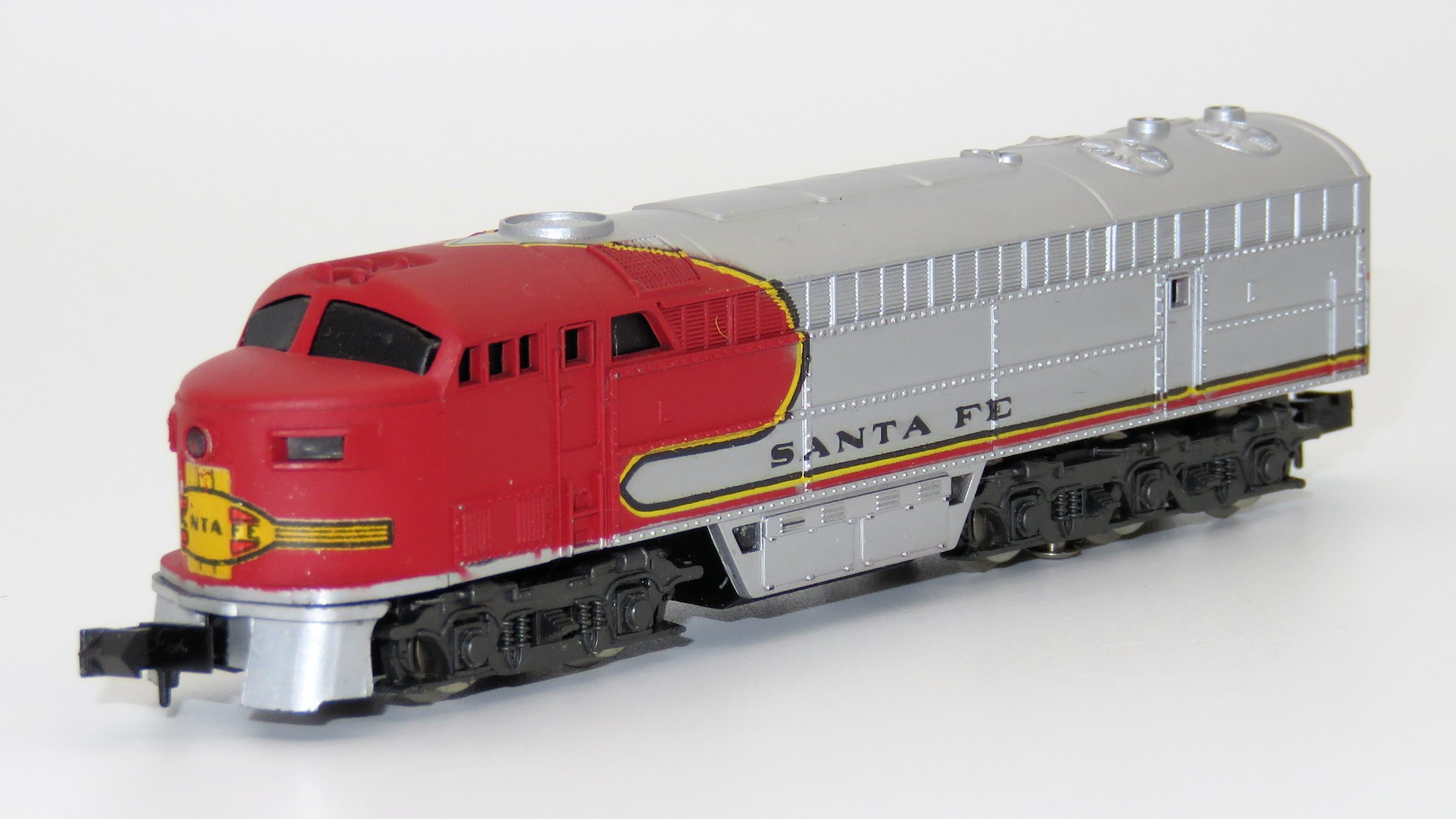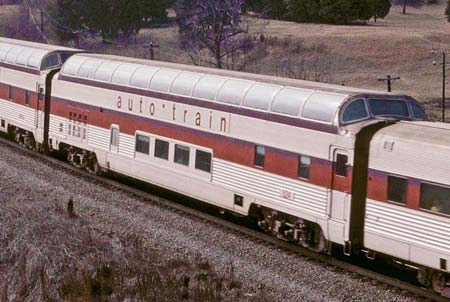Prototype History: In the post-war period, passenger rail service boomed. In order to increase efficiency, the railroads set to replacing their old wood, steel and concrete heavyweight passenger cars with newer lightweight, streamlined cars. The new cars were made from stainless steel, aluminum and Cor-Ten steel. These cars required less motive power to pull and were cheaper to manufacture. Production was also concentrated in a few manufacturers rather than each railroad making its own. This led to standardization which further reduced costs. The new "lightweight" cars were also given "streamlined" designs to make them more visually appealing. Budd, Pullman Standard and ACF were all well known manufacturers of these cars.
Budd was well known for their corrugated cars (for which they held a patent). When Burlington inaugurated its vista-domed Kansas City and American Royal Zephyrs on the Chicago-Kansas City route, the Santa Fe responded by ordering full-length domes for several trains serving the same route. Although Pullman, which manufactured the Milwaukee Super Domes, proposed to make similar cars for the Santa Fe, the railroad turned instead to Budd to build its “Big Domes.”
Other than being fluted stainless steel rather than painted, the Big Domes superficially appear almost identical to Milwaukee’s Super Domes, but a close look reveals several differences. Upstairs, rather than arrange all the seats in coach formation, the rear part of the car had 18 lounge seats allowing for parties of three to eight to sit together. With the 57 coach-like seats, the dome had total seating for 75 (as opposed to 68 in the Super Domes)–more than three domes of the Kansas City Zephyr and American Royal Zephyr combined.
Budd was well known for their corrugated cars (for which they held a patent). When Burlington inaugurated its vista-domed Kansas City and American Royal Zephyrs on the Chicago-Kansas City route, the Santa Fe responded by ordering full-length domes for several trains serving the same route. Although Pullman, which manufactured the Milwaukee Super Domes, proposed to make similar cars for the Santa Fe, the railroad turned instead to Budd to build its “Big Domes.”
Other than being fluted stainless steel rather than painted, the Big Domes superficially appear almost identical to Milwaukee’s Super Domes, but a close look reveals several differences. Upstairs, rather than arrange all the seats in coach formation, the rear part of the car had 18 lounge seats allowing for parties of three to eight to sit together. With the 57 coach-like seats, the dome had total seating for 75 (as opposed to 68 in the Super Domes)–more than three domes of the Kansas City Zephyr and American Royal Zephyr combined.
Road Name History: 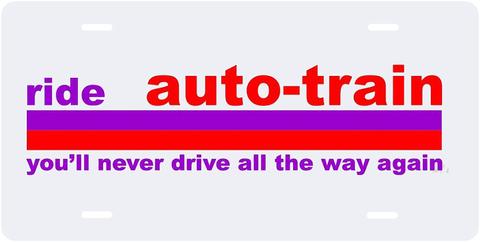 Auto-Train was incorporated in 1969 and began operations in late 1971. Initially, they hauled passengers and their automobiles from Lorton in Northern Virginia to Sanford, Florida which is not far from Orlando. RF&P and Seaboard Coast Line were the host railroads. The passenger car fleet was purchased secondhand from various roads and the autoracks were an early design from Canadian National. GE U36B's were used for road power (built to Seaboard Coast Line specifications.) Lorton was the northern terminus because the autoracks would not fit the clearances in Washington D.C. and points north. Auto-Train featured daily departures from both ends. The trains were popular and usually exceeded 30 cars evenly split between autoracks and passenger cars. In 1974, Auto-Train expanded with trains running between Louisville and Sanford. This second route was a failure and this combined with a couple of expensive wrecks sent Auto-Train into a downward spiral. In 1980, they declared bankruptcy and the following April, the last Auto-Train ran. Amtrak resurrected the idea in 1983 with a tri-weekly service on the Lorton - Sanford route.
Auto-Train was incorporated in 1969 and began operations in late 1971. Initially, they hauled passengers and their automobiles from Lorton in Northern Virginia to Sanford, Florida which is not far from Orlando. RF&P and Seaboard Coast Line were the host railroads. The passenger car fleet was purchased secondhand from various roads and the autoracks were an early design from Canadian National. GE U36B's were used for road power (built to Seaboard Coast Line specifications.) Lorton was the northern terminus because the autoracks would not fit the clearances in Washington D.C. and points north. Auto-Train featured daily departures from both ends. The trains were popular and usually exceeded 30 cars evenly split between autoracks and passenger cars. In 1974, Auto-Train expanded with trains running between Louisville and Sanford. This second route was a failure and this combined with a couple of expensive wrecks sent Auto-Train into a downward spiral. In 1980, they declared bankruptcy and the following April, the last Auto-Train ran. Amtrak resurrected the idea in 1983 with a tri-weekly service on the Lorton - Sanford route.

Brand/Importer Information: Bachmann Industries (Bachmann Brothers, Inc.) is a Bermuda registered Chinese owned company, globally headquartered in Hong Kong; specializing in model railroading.
Founded in Philadelphia, Pennsylvania, the home of its North American headquarters, Bachmann is today part of the Kader group, who model products are made at a Chinese Government joint-venture plant in Dongguan, China. Bachmann's brand is the largest seller, in terms of volume, of model trains in the world. Bachmann primarily specializes in entry level train sets, and premium offerings in many scales. The Spectrum line is the high quality, model railroad product line, offered in N, HO, Large Scale, On30, and Williams O gauge all aimed for the hobbyist market. Bachmann is the producer of the famous railroad village product line known as "Plasticville." The turnover for Bachmann model trains for the year ended 31 December 2006 was approximately $46.87 million, a slight increase of 3.36% as compared to 2005.
Founded in Philadelphia, Pennsylvania, the home of its North American headquarters, Bachmann is today part of the Kader group, who model products are made at a Chinese Government joint-venture plant in Dongguan, China. Bachmann's brand is the largest seller, in terms of volume, of model trains in the world. Bachmann primarily specializes in entry level train sets, and premium offerings in many scales. The Spectrum line is the high quality, model railroad product line, offered in N, HO, Large Scale, On30, and Williams O gauge all aimed for the hobbyist market. Bachmann is the producer of the famous railroad village product line known as "Plasticville." The turnover for Bachmann model trains for the year ended 31 December 2006 was approximately $46.87 million, a slight increase of 3.36% as compared to 2005.
Item created by: nscalemodeler160 on 2016-05-08 06:40:38. Last edited by George on 2024-01-26 20:29:01
If you see errors or missing data in this entry, please feel free to log in and edit it. Anyone with a Gmail account can log in instantly.
If you see errors or missing data in this entry, please feel free to log in and edit it. Anyone with a Gmail account can log in instantly.


